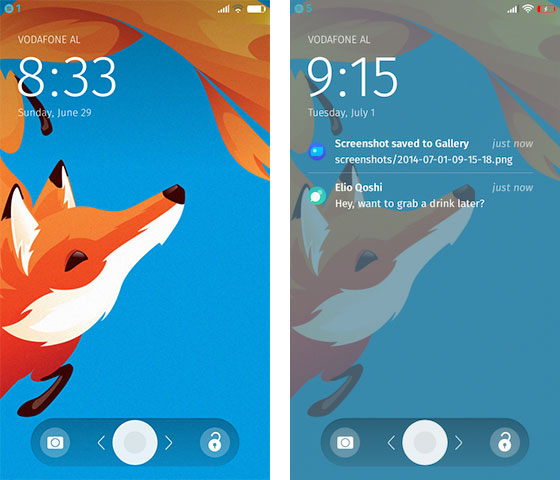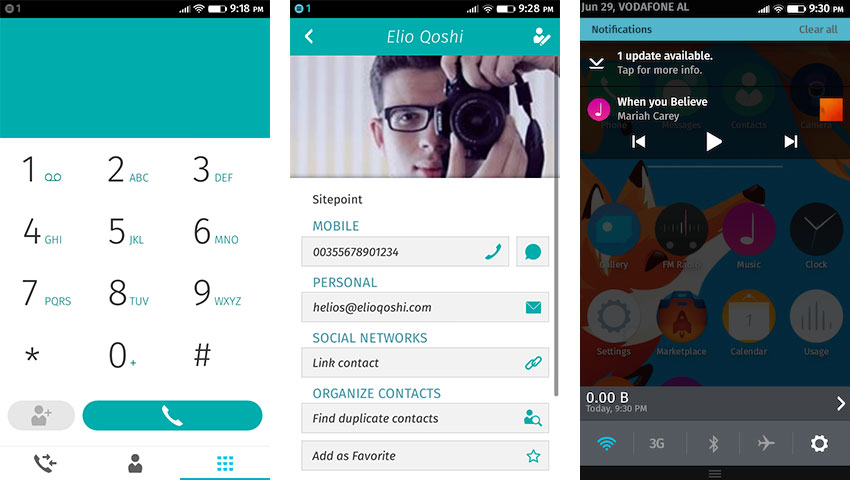In the tech space there are two definitions of free. Free as in free beer, and free as in freedom.
The latter definition is at the core of Open Source communities such as Mozilla. It was also initially the reason why Mozilla’s new mobile operating system Firefox OS was received so well. The idea of a mobile operating system fully based on web and open source technology was attractive to many. It motivated people to contribute to the project, support it and even switch from their iOS or Android smartphone to Firefox OS.
With it’s prime focus on the low end market and developing countries, Firefox OS is gaining a solid user base and is trying to break the Apple and Google mobile duopoly. The announcement of a $25 smartphone in several markets has helped gain further interest.
With the announcement of Firefox OS 2.0, a new chapter is set to be started, the first since the launch of the first Firefox OS smartphones, exactly 1 year ago.
Some of the new features announced for Firefox OS 2.0 are:
- Users can copy/paste and select items.
- A new lock screen with a music player and scrollable notifications.
- Find my phone feature that will help you find your phone through GPS trackers and will emit a noise when near.
- Firefox Accounts Integration that will log you into everything with the help of just one login.
- Creating ringtones from music.
- Smarter typing input
- NFC technology that will help share data with other phones and devices
- Direct dialing within the call log
- A new camera app
As an owner of a Firefox OS Developer Preview Phone, a Geeksphone Peak, I downloaded the latest Alpha Build of Firefox OS 2.0 and tested it on my device. If you want to experiment with it too, you can find the builds here. I’m going to show you around the updated UI and some work in progress updates in Firefox OS 2.0. Obviously, everything shown is not final as the system build is updated every day, and a final update is due for release in late summer.

The first change you will notice is the updated lock screen. It is clear, uncluttered and attractively designed. The new two directional slide lock bar now lets you access the camera app directly without unlocking the screen. The screen lacks any visible borders, making the UI elements and UX more unified. Even the status bar has only a subtle gradient, refusing to keep a black solid border. Being able to see the notifications from the lock screen is unique in Firefox OS, a feature which Google recently introduced at I/O for Android L (a coincidence perhaps?).
Whereas in Android the application drawer and home screens are separate, they are in the same menu in Firefox OS. The application screens can currently be highly customized with icon alignment, organization and size easily modifiable on the fly by holding an app icon. These features provide fantastic functionality for those with accessibility requirements or just those with large fingers!
The notifications bar is still heavily inspired by Android, putting push notifications on top, data usage next, and quick access to settings at the bottom. However, in future updates the notification bar is set to be overhauled completely. It’s layout is set to change and users will be able to access it from sliding from the bottom upwards, instead from the top downwards.
The dial screen has been also revamped, with bigger buttons and a cleaner interface. The high contrast rich colors and buttons look slick and modern, yet warm, due to their round forms, an aspect which adds to the UI’s friendliness.

This friendliness is a characteristic which Firefox OS achieves well. Due to Mozilla’s community nature, a good portion of Firefox OS code and contributions are made by volunteers, a unique approach for a mobile OS. This generally only happens in true Open Source Communities (unlike Android), hence the big hope among enthusiasts, who want it to succeed.
Mozilla has set some serious goals for Firefox OS in 2014. Amongst them is to own 1% of the Mobile OS market share, which is a large goal, yet doable if everyone continues to pull together. You can find the Roadmap of Firefox OS here.
Firefox OS is definitely a game changer. Penetrating the market with a $25 smartphone could enable it to compete with the big boys Apple and Google. There is a lot yet to be improved in Firefox OS, but do you remember Android in its first 2 years? You don’t? Well, probably best. There is a long way for Firefox OS to go, but with such a large and enthusiastic community involved, it will definitely make a lasting impact.
Frequently Asked Questions (FAQs) about Firefox OS 2.0 UI Design Features
What are the key design features of Firefox OS 2.0?
Firefox OS 2.0 comes with a revamped user interface that is both intuitive and user-friendly. The design features include a new home screen, lock screen, and cut/copy/paste functionality. The home screen is customizable, allowing users to add their favorite apps for easy access. The lock screen now includes music controls and notifications for convenience. The cut/copy/paste functionality has been improved for better text manipulation.
How does Firefox OS 2.0 compare to other operating systems?
Firefox OS 2.0 is designed to be lightweight and efficient, making it ideal for devices with limited resources. It is built on open web standards, which means it can run applications developed using HTML, CSS, and JavaScript. This makes it a versatile choice compared to other operating systems that require specific programming languages.
What are the new features in Firefox OS 2.0?
Firefox OS 2.0 introduces several new features including NFC sharing, LTE support, and a new keyboard. NFC sharing allows users to share content with other NFC-enabled devices simply by touching them together. LTE support ensures faster internet connectivity. The new keyboard offers predictive typing for a smoother typing experience.
How does the new home screen in Firefox OS 2.0 improve user experience?
The new home screen in Firefox OS 2.0 is designed to be more intuitive and user-friendly. It allows users to customize their home screen by adding their favorite apps for easy access. This means users can tailor their home screen to suit their personal preferences, improving the overall user experience.
What is the purpose of the new lock screen in Firefox OS 2.0?
The new lock screen in Firefox OS 2.0 is designed to provide users with quick access to important information and controls. It includes music controls and notifications, allowing users to control their music and view important notifications without unlocking their device.
How has the cut/copy/paste functionality been improved in Firefox OS 2.0?
The cut/copy/paste functionality in Firefox OS 2.0 has been improved to offer better text manipulation. Users can now easily cut, copy, and paste text within and between apps, making it easier to move text around.
What is NFC sharing in Firefox OS 2.0?
NFC sharing in Firefox OS 2.0 allows users to share content with other NFC-enabled devices simply by touching them together. This makes it easy to share photos, videos, contacts, and other content with friends and family.
How does LTE support in Firefox OS 2.0 improve internet connectivity?
LTE support in Firefox OS 2.0 ensures faster internet connectivity. This means users can browse the web, stream videos, and download apps more quickly and smoothly.
What is the new keyboard in Firefox OS 2.0 like?
The new keyboard in Firefox OS 2.0 offers predictive typing for a smoother typing experience. It predicts what the user is likely to type next, making it faster and easier to type messages, emails, and search queries.
How does Firefox OS 2.0 support open web standards?
Firefox OS 2.0 is built on open web standards, which means it can run applications developed using HTML, CSS, and JavaScript. This makes it a versatile choice for developers, as they can use familiar web technologies to create apps for Firefox OS 2.0.
 Elio Qoshi
Elio QoshiElio is a open source designer and founder of Ura Design. He coordinates community initiatives at SitePoint as well. Further, as a board member at Open Labs Hackerspace, he promotes free software and open source locally and regionally. Elio founded the Open Design team at Mozilla and is a Creative Lead at Glucosio and Visual Designer at The Tor Project. He co-organizes OSCAL and gives talks as a Mozilla Tech Speaker at various conferences. When he doesn’t write for SitePoint, he scribbles his musings on his personal blog.

